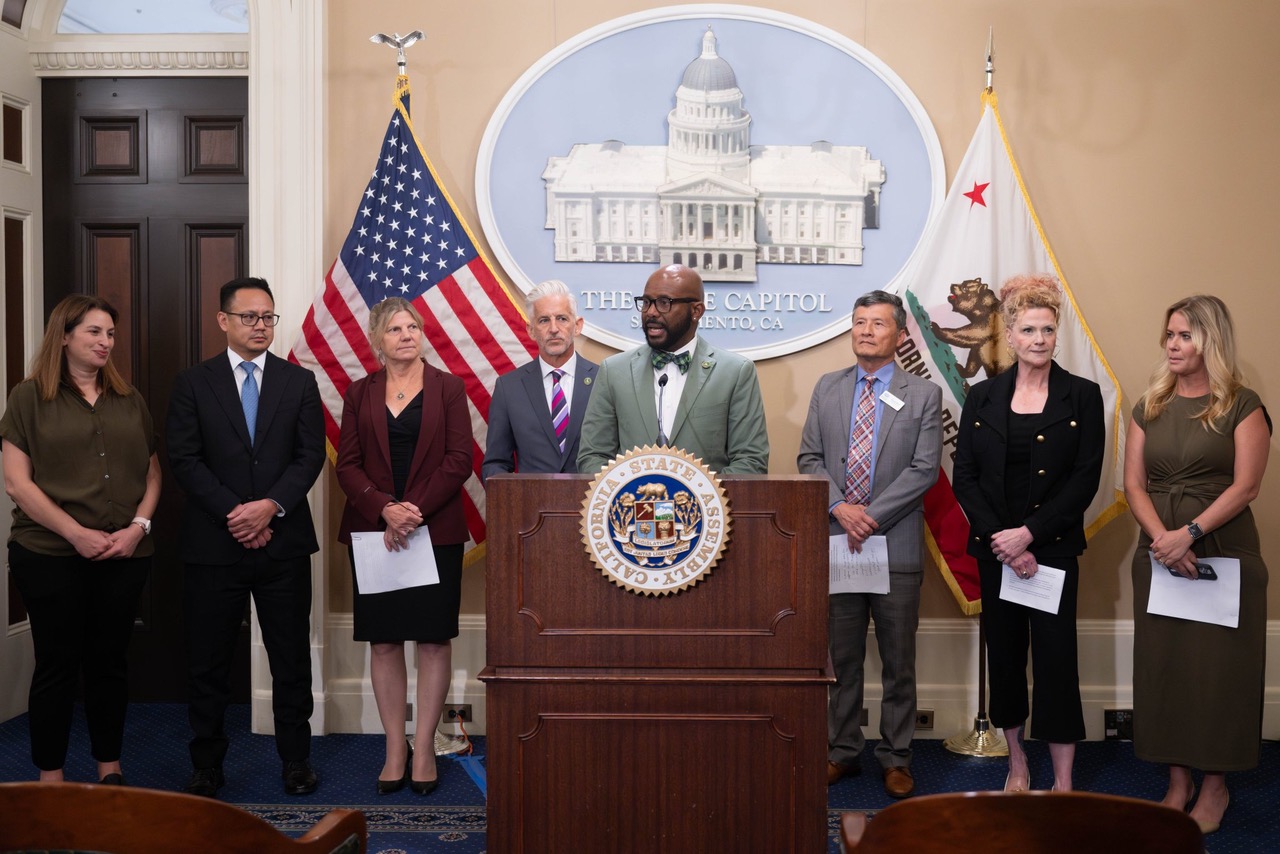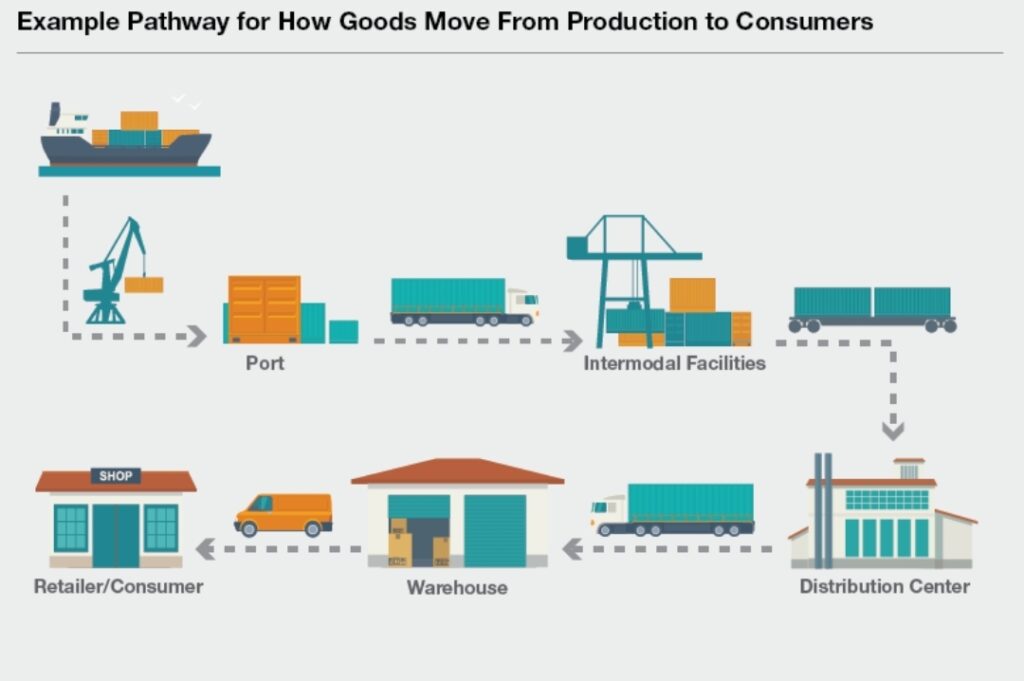
By Antonio Ray Harvey | California Black Media
Assemblymember Mike A. Gipson (D-Carson), a member of the California Legislative Black Caucus (CLBC) and chair of the Assembly Select Committee on Ports and Goods Movement, said the state must provide seaports permanent funding for them to run optimally and remain competitive.
“We have yet to see dedicated, ongoing, consistent money allocated to our ports from our state budget,” said Gipson during a news conference held at the State Capitol.

In August, Gipson released an interim report that features California ports’ crucial role in the state and national economy.
The 52-page “Chair’s Interim Report” includes an observation of the most critical issues facing the goods movement sector and lays out a blueprint to keep the state’s 11 ports competitive in a complicated and constantly shifting environment.
Gipson stressed that foremost among priorities is the need for the state to continue investing in docking places for cargo ships.
“We are still happy to make sure these ports are not left behind and not neglected,” Gipson said at the news conference. “We still see today that our ports are fighting to have allocations from our federal partners and federal dollars. This report elevates that we need our fair share,” he added.
Over the past year, the Select Committee on Ports and Goods Movement toured the state’s 11 public ports and hosted numerous hearings on the state of the ports. Gipson was first appointed chair by former Assembly Speaker Anthony Rendon (D-Lakewood). When Assemblymember Robert Rivas (D-Hollister) replaced Rendon as speaker, he asked Gipson to continue as Chair.

“The final tour stop for the Select Committee was the port of San Diego last spring. The tour highlighted the port’s efforts in green and sustainable operations,” Gipson told California Black Media (CBM). The tour gave select committee members a breakdown of all of the possibilities the port has to create for economic vitality and growth.
“It’s important that California policymakers support efficient, modern, and sustainable maritime operations while we reduce emissions to improve environmental and public health in our communities,” stated Frank Urtasun, chairman of the Port of San Diego Board of Port Commissioners.
One of the most significant findings and policy recommendations summarized in the report is the need to understand the standard operations of the ports.
The report states that a “failure to maintain competitiveness” could result in an “inability to afford climate and modernization investments” as well as maintaining “regional and national economic benefits.”
According to the report, the states’ ports drive trade and tourism, supporting millions of good-paying jobs; they are the cleanest in the nation and, by many measures, in the world; and the ports play a key role in local, regional and national emergency readiness.
In addition, the Chair’s report provides details that the market share of California ports has consistently declined since 2006, federal funds obtained by Californian ports are disproportionately low, and environmental challenges of decarbonization, reducing localized air pollution impacts, and maintaining clean water are negatively impacting California ports.
“It’s been made painfully clear that we need to do everything possible to elevate ports in the state of California,” Gipson told CBM. “I for one believe that the pandemic underscored why ports are essential to California.”
In July, Gov. Gavin Newsom invested $27 million in 10 innovative projects at the Ports of Los Angeles, Long Beach, Oakland, San Diego, and Hueneme, “the busiest ports in the nation,” Gipson said during the news conference.
The projects include a range of solutions including maximization of cargo routing, distribution of cutting-edge technologies such as artificial intelligence, emissions reduction measures, trucking appointment systems, and the development of new data systems for cargo.
Representatives from The California Association of Port Authorities (CAPA) praised the governor for allocating funds for projects that advance the ports’ objectives to improve the state’s supply chain.
CAPA consists of 11 major deepwater port authorities across our state. Since 1940, CAPA’s mission has been educating state and federal policymakers on port operations.
“These critical funds will establish more coordination across the supply chain at a time when the global economy is counting on California Ports,” said CAPA President Kristine Zortman.
In May, U.S. Sen. Alex Padilla (D-Calif.) announced a $112 million federal investment in that the Ports of Los Angeles and Long Beach (San Pedro Ports) will receive more than $112 million through a U.S. Army Corps of Engineers program for critical construction upgrades, operations and maintenance activities.
“The Ports of Los Angeles and Long Beach move 40 percent of the nation’s container imports, transporting the goods that power our economy,” said Padilla.
The report outlines the importance of ports up and down the state, Gipson said. They all serve a function whether they are located on the coast or inland. The Port of San Pedro encompasses the Port of Los Angeles and Long Beach. About 30% of imports filter through these main ports alone, Gipson said.
The Port of Humboldt Bay, 225 miles north of San Francisco, is in the process of building the largest “Wind Farm” on the West Coast, Gipson shared.
Gipson says he learned that the Port of Oakland uploads and discharges more than 99% of the containerized goods moving through Northern California. Oakland’s cargo capacity was the ninth busiest container port in the country based on the 2023 calendar year.
The inland ports cities of West Sacramento and Stockton have “unique” harbor facilities that relieve congestions and facilitate distribution to inland destinations in the Sacramento and Central Valley regions, Gipson told CBM at the State Capitol.
“Each and every port in California plays a vital role and contributes to our supply chain. Not one port in California is more important than the next,” Gipson said. “Each and every port is essential to moving forward and essential to making sure California is the 5th largest economy in the world.”




